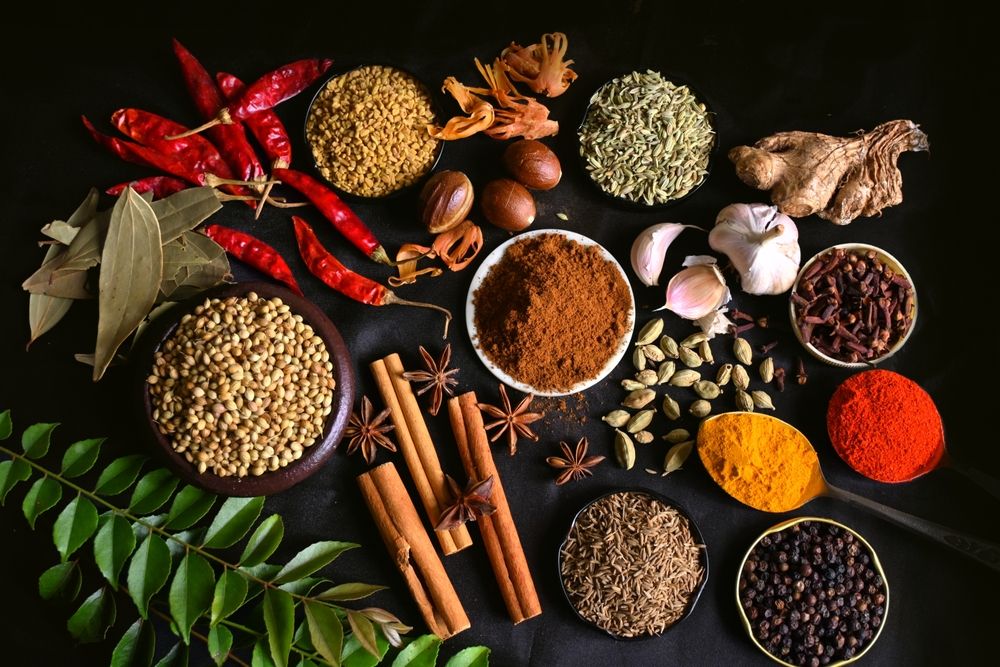Ever wonder how certain dishes achieve that unforgettable flavor that’s impossible to replicate with a single store-bought spice mix? The secret often lies in custom seasoning blends, carefully crafted to highlight each ingredient and impart a unique signature taste. While store shelves overflow with pre-mixed rubs and seasonings, making your own can be more flavorful, personalized, and even cost-effective in the long run.
1. Why Blend Your Own Spices?
Spices are the lifeblood of countless world cuisines, yet relying on mass-produced blends can leave your meals tasting generic. Blending your own allows for a unique flavor identity tailored to your cooking style. Here are just a few reasons to invest energy into do-it-yourself seasoning mixes:
- Customization: If you dislike cumin’s earthiness or prefer a more robust garlic punch, you can fine-tune each mix to your palate.
- Quality Control: When you pick out fresh spices and measure them out yourself, you can avoid fillers, excessive salt, or preservatives.
- Cost Savings: Buying spices in bulk or at specialty ethnic markets is often cheaper than small jars. By mixing them into versatile blends, you maximize value.
- Culinary Creativity: Designing your own blend fosters a sense of culinary adventure—you can produce an Indian-inspired masala or a smoky barbecue rub that’s distinctly yours.
2. Understanding Flavor Profiles and Basic Spices
Spices vary in aroma and taste—some are hot, some sweet, others pungent or earthy. By grasping these core traits, you can balance your blends so they complement a dish rather than overpower it. Knowing how each spice behaves with heat, moisture, and other ingredients is key.
Spice Categories
- Base Flavors:
- Paprika (mild sweetness, sometimes smoky), Chili Powder (heat plus hints of cumin/garlic in blends), Cumin (earthy, slightly bitter)
- Typically used in initial layers of seasoning; form the bulk of many rubs or blends.
- Aromatic Allies:
- Garlic Powder, Onion Powder, Ginger, Turmeric
- Provide savory or pungent undertones, bridging flavors in a cohesive mix.
- Herbs:
- Oregano, Thyme, Basil, Rosemary
- Add lighter, fragrant notes—often used in Mediterranean or herbal blends.
- Heat Makers:
- Cayenne Pepper, Crushed Red Pepper, Black Pepper
- Control spiciness. A tiny pinch can alter a blend’s entire personality.
- Warm and Sweet:
- Cinnamon, Cloves, Nutmeg, (and sometimes star anise, cardamom)
- Found in sweet-savory blends (think Middle Eastern or Indian masalas).
- Salt and Umami:
- Salt is often integral, but some prefer no-salt blends. A dash of MSG or mushrooms (powdered) can amplify savoriness.
3. Building Blocks of a Balanced Blend
Balance is the difference between a blend tasting one-dimensional (e.g., too salty or too hot) and a synergy of complementary flavors. Achieving this requires a basic ratio plan and testing incremental adjustments.
Basic Ratio Outline
- Base Spice (40–50%): Usually the primary flavor (e.g., chili powder, paprika, or a combination of both).
- Secondary Layer (20–30%): Additional notes like cumin, coriander, or aromatic herbs that define the blend’s region or style.
- Enhancers (10–20%): Intensely flavored spices—garlic, onion, black pepper, or pungent seeds like fenugreek—that enhance the primary layer.
- Accents (a pinch to 10%): Powerful or tricky spices (cayenne, clove, nutmeg) or finishing touches (salt, sugar, etc.) that can easily overpower if used too liberally.
Balancing Tactics
- Test in Small Batches: Start with 1–2 tablespoons total mixture. Write down each measurement. Tweak gently until it suits your preference.
- Smell and Taste: After mixing thoroughly, smell the blend. If a single note dominates too aggressively, reduce or offset it. Optionally, sprinkle a small pinch on a neutral piece of food (like scrambled eggs) to taste test.
- Adjust Over Time: Once you try your new blend on a real dish (like roast chicken or chili), note if it’s missing complexity or overemphasizing a certain spice. Revisit the ratio next time.

4. Signature Blends to Get You Started
Examples can kickstart your creativity and help you see how different compositions apply to different cuisines. Once you get comfortable, you can add or swap ingredients freely to craft your “house” version.
Sample Blends
- All-Purpose Seasoning
- Base: 2 tablespoons paprika, 1 tablespoon garlic powder, 1 tablespoon onion powder
- Secondary: 1 teaspoon black pepper, 1 teaspoon dried thyme
- Accents: 1 teaspoon salt (optional), 1/2 teaspoon cayenne if you want mild heat
- Use: Great for chicken, roasted veggies, or sprinkling on potatoes before baking.
- Classic Cajun/Creole
- Base: 2 tablespoons paprika, 1 tablespoon chili powder
- Secondary: 2 teaspoons oregano, 2 teaspoons thyme, 1 teaspoon onion powder
- Enhancers: 1 teaspoon garlic powder, 1 teaspoon black pepper
- Heat: 1/2–1 teaspoon cayenne pepper (adjust to taste)
- Use: Perfect for gumbo, shrimp, or blackened fish/chicken.
- Moroccan Ras el Hanout–Style
- Base: 1 tablespoon ground cumin, 1 tablespoon ground coriander
- Secondary: 1 tablespoon paprika, 1 teaspoon ginger, 1 teaspoon turmeric
- Warm/Sweet: 1/2 teaspoon cinnamon, 1/4 teaspoon each of clove and nutmeg
- Spice: Pinch of cayenne or chili flakes optional
- Use: Lamb, chickpea stews, or roasted root vegetables.
- Italian Herb Blend
- Base: 1 tablespoon dried oregano, 1 tablespoon dried basil
- Secondary: 1 tablespoon dried parsley, 1 teaspoon dried thyme
- Enhancers: 1 teaspoon garlic powder, 1/2 teaspoon onion powder, optional pinch chili flakes
- Use: Pasta sauces, pizza, roasted tomatoes, or any dish needing a Mediterranean twist.
5. Storing and Maintaining Freshness
Even a brilliantly balanced blend can degrade if exposed to light, heat, or moisture. Proper storage preserves both potency and the characteristic flavors you painstakingly developed.
Preservation Tips
- Airtight Containers: Small glass jars, metal tins, or high-quality plastic containers with tight seals work best.
- Label and Date: Always mark the blend name and the date you made it. Spices lose potency over time, generally around 6–12 months for optimal flavor.
- Cool, Dark Place: Keep them out of direct sunlight, near stoves, or high-humidity areas. Light and heat degrade essential oils in spices.
- Small Batches: It’s better to create fresh blends in smaller quantities. A big batch might grow stale before you use it all.
6. Applying Blends to Your Dishes
Even the best seasoning blend can underwhelm if misapplied. Over-salting, using it too late in the cooking process, or pairing it with the wrong ingredients can hinder the intended result.
Usage Guidelines
- Rub vs. Marinade: If it’s a dry rub for meats, pat the meat dry and generously coat. For wet marinades, combine the spice mix with an acid (vinegar, citrus) plus oil for deeper penetration.
- Timing: Some blends benefit from a quick pan “bloom” in oil (like curry powders). Others—like a finishing salt—go best sprinkled right before serving.
- Layering: You can add a bit of the blend at the start, then a final sprinkle at the end to ensure bright top notes. But be mindful not to over-salt if your blend includes salt.
- Tasting: Always taste as you cook, adjusting if certain notes need boosting (a pinch more chili for heat, or a bit of sugar for balance).
7. Experiment, Evolve, and Have Fun
The joy of designing your own spice blends is discovering new combinations or perfecting them over time. If a particular note feels lacking, you can tweak the ratio. Over time, you’ll build a small library of tailored blends that reflect your unique tastes and cooking style.
Ideas for Ongoing Exploration
- Seasonal Tweaks: In cooler months, add warm spices like cinnamon or cardamom to hearty stews. Summer might call for zesty citrus or herbal additions.
- Try Global Cuisines: Attempt blends from Indian garam masala, Jamaican jerk seasoning, or Chinese five-spice. Adapt them to your local ingredients and preferences.
- Keep Notes: Document each tweak in a small notebook. Knowing you used 2 teaspoons of onion powder vs. 1 can help replicate or refine the blend next time.
- Share with Others: Packaging small jars of your custom mix can be a thoughtful homemade gift for friends and family who appreciate good cooking.
Designing your own spice blends is more than a crafty kitchen hack—it’s an invitation to step into the role of flavor architect, layering tastes to create dishes uniquely yours. From mastering the fundamentals of how each spice contributes to a blend, to discovering the joy of carefully balancing heat, sweetness, and aromatics, homemade mixes can transform ordinary meals into showstoppers. It doesn’t require fancy equipment—just fresh spices, a willingness to experiment, and a commitment to keeping track of what works (and what doesn’t).
By storing your mixes properly, rotating old stock, and applying them with thoughtful cooking techniques—be it searing, marinating, or a simple dusting at the finish—you harness the full potential of each blend. Over time, you’ll find yourself naturally fine-tuning ratios and exploring new frontiers—like exotic Middle Eastern or Southeast Asian combinations—confident in your ability to conjure mesmerizing flavors from humble jars of powder and seeds.
So go ahead: choose a base concept, experiment with layering secondary flavors, toss in a dash of your own personality, and see how it enlivens your next dish. Once you get hooked on the delight of a perfectly balanced marinade or a rub that transforms a simple roast, you’ll wonder why you ever settled for generic spice mixes. Embrace your inner spice blender, and let your signature seasonings define the warmth and excitement of your home kitchen.


